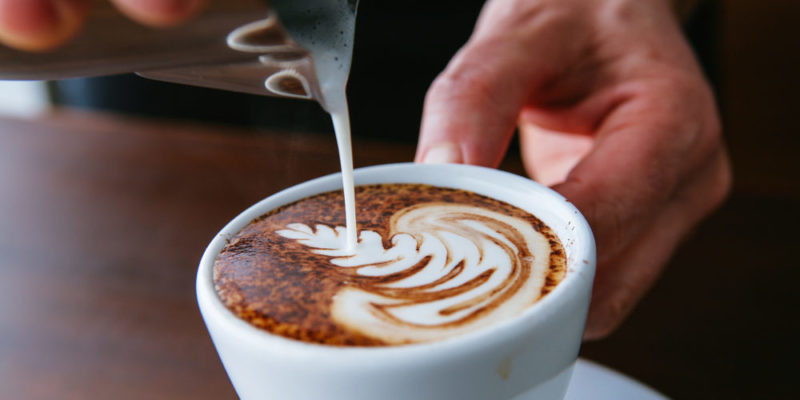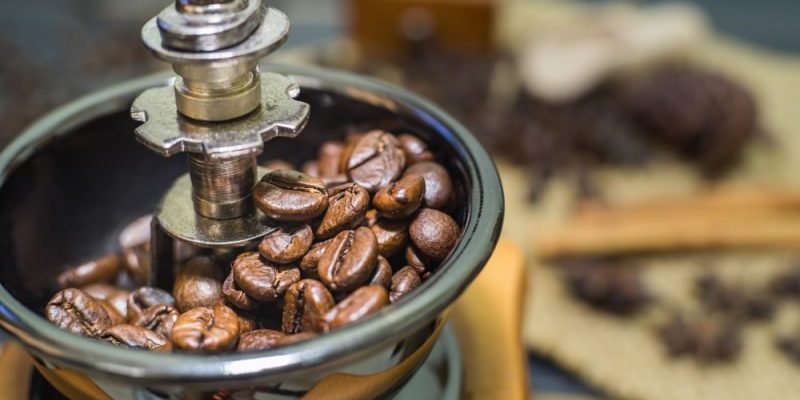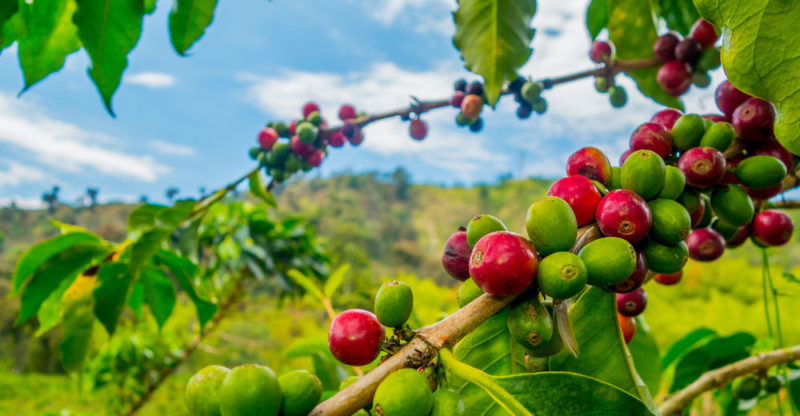We explain what coffee is, the types that exist and how this infusion is made. Also, what are its features and benefits.
What is coffee?
Coffee is a hot infusion that is consumed in various Western countries . Its name derives from a tree: the coffee plant whose grain is used to make said infusion.The coffee plant or tree reaches between 4 and 6 meters in height, although it is mostly cut down so that the beans are not produced at such a height. For its part , the coffee bean measures approximately 1 centimeter .
These grains are used for the preparation of the infusion by being roasted and mixed with hot water for the preparation of coffee.
There are many different ways to prepare coffee, one of the favorite drinks in several countries around the world.
This infusion is characterized by its exquisite flavor and the combination with other drinks (such as cream, milk or cocoa) that give different aromatic and taste variations.
Physical characteristics of coffee
 The coffee plant has red fruits the size of small cherries.
The coffee plant has red fruits the size of small cherries.Within these is the coffee seed. The beans of the coffee plant measure approximately 1 centimeter.
In one of its parts the grain is flat and on the other side it is curved , with a line through it.
When extracted from the plant, the beans are light brown and after the roasting process they turn dark brown.
Types of coffee preparation
There are different types of coffee preparation. Thus, among the most prominent are:
- Express or express coffee. It is the common coffee, prepared with ground coffee beans and hot water.
- Cut coffee. It is prepared with coffee and a little milk (skim or whole)
- Coffee latte. It is prepared with 1/3 espresso and 2/3 milk.
- American coffee. Espresso coffee with more water.
- It is espresso, water and milk foam.
- It is an espresso, water, milk foam and grated chocolate.
Coffee flavor and acidity
 The flavor of the coffee can vary depending on the plant , the time from harvest to preparation of the coffee, the type of combination with other drinks, etc.
The flavor of the coffee can vary depending on the plant , the time from harvest to preparation of the coffee, the type of combination with other drinks, etc.However, the infusion of coffee is measured worldwide by a table known as the “coffee flavor wheel ” , a term given to it by the SCAA (Specialty Coffee Association of America ), the organization that has an entire classification. for buyers and for sellers.
The acidity will depend on the coffee plant as well as the area where the coffee is harvested. Plant coffees from Latin America are generally more acidic than from other parts of the world due to their volcanic soils , rich in minerals.
Taste, body, aroma and bitterness of the coffee
Coffee has 800 compounds that stimulate the taste buds . All this will affect and be modifiable in terms of flavor and aroma depending on the type of soil of the coffee plant.The aftertaste is related to the time that the taste of the coffee remains in the mouth after having ingested it. This can vary or be modified depending on the quality.
On the other hand, the viscosity, weight or thickness make up the body of the coffee .
In terms of bitterness, decaffeinated coffee has much less bitter taste than traditional roasted bean coffee.
Advantages of coffee

- Increases concentration and attention levels
- Improves physical performance
- combat depression
- It produces satiety and does not provide significant amounts of calories (as long as it is consumed without other hot infusions)
- Enhances the effect of analgesics
- It is anticancer
- Prevents type II diabetes and Alzheimer's disease
- Promotes digestion
Disadvantages of coffee

- Can cause headaches
- alters the nervous system
- Unfiltered coffee can raise cholesterol levels
- Can cause ulcer if consumed in excess
- Can cause spontaneous abortions
- could cause hallucinations
World trade and production of coffee
The world's coffee is produced in 70 countries of which only 45 of them have control of 97% of world production.There are many countries in which the export of coffee constitutes the main source of gross national production. Among the countries that produce and export the most coffee are:
- Burundian (59%)
- Ethiopia (33%)
- Rwanda (27%)
- Honduras (20%)
- Ugandan (18%)
- Nicaraguan (17%)
- Guatemalan (12%)
- El Salvador (9%)
- Colombia (7%)
- Tanzanian (5%)
Cultivation and production of coffee beans
 The most important coffee production comes from family businesses with less than 10 hectares of land , in many cases with less than 5 hectares of land.
The most important coffee production comes from family businesses with less than 10 hectares of land , in many cases with less than 5 hectares of land.This means that farmers are not very mechanized and need a lot of labor.
As for the plants, a young coffee tree will need 3 or 4 years before producing coffee beans . This plant is considered an adult when it is between 6 and 8 years old and can live for many decades, but it will only be used for coffee production until it is 25 or 30 years old.
Coffee planting can be done outdoors but half shades are also used. The latter is known as shade coffee.
Collection, classification, polishing and storage of coffee beans
 From the moment of flowering, it takes between 7 and 9 months until the plant can finally be harvested . This time varies in relation to the climate and altitude of the area.
From the moment of flowering, it takes between 7 and 9 months until the plant can finally be harvested . This time varies in relation to the climate and altitude of the area.At harvest time, coffee pickers will only pick the ripe beans along with the fruit . These are known as coffee cherries.
The fruit must then be removed, leaving only the coffee bean. The process that takes the coffee bean can be by dry, wet or semi-dry method.
Then a classification is made, separating those decomposed or damaged grains from the rest of the production. The penultimate step is polishing, in which the skin is removed, improving the appearance of the grains.
They are then stored (without roasting) since their durability is greater if they are preserved properly: they require a humidity of 12% so that they do not take on an unpleasant odor or produce fungi.
Uses of coffee
Coffee has not only become a rich infusion to taste and/or combine with other drinks. It is also used today for different purposes:
- As paint to make decorative paintings
- As an exfoliating soap, since the ground coffee beans allow the removal of dead skin cells
- To remove stains from wooden furniture
The above content published at Collaborative Research Group is for informational and educational purposes only and has been developed by referring reliable sources and recommendations from technology experts. We do not have any contact with official entities nor do we intend to replace the information that they emit.
Passionate about understanding and contributing to a world that does not stop changing. New forms of Work, Sustainability and Technology. For many years he has worked as a creative for large international companies. He has a Ph.D. in information technology and he has been doing quantitative research in the interdisciplinary areas of information systems, cyber security, data analytics and artificial intelligence. He continue to look for creative solutions through technology to help companies to be more humane and sustainable..
Leave a reply
Your email address will not be published. Required fields are marked *Recent post

Sport: What Is It, Types, Risks, Features, Characteristics and Examples

Dogs: Emergence, Features, Characteristics, Feeding and Breeds

Story: Definition, Elements, Structure, Features and Characteristics

